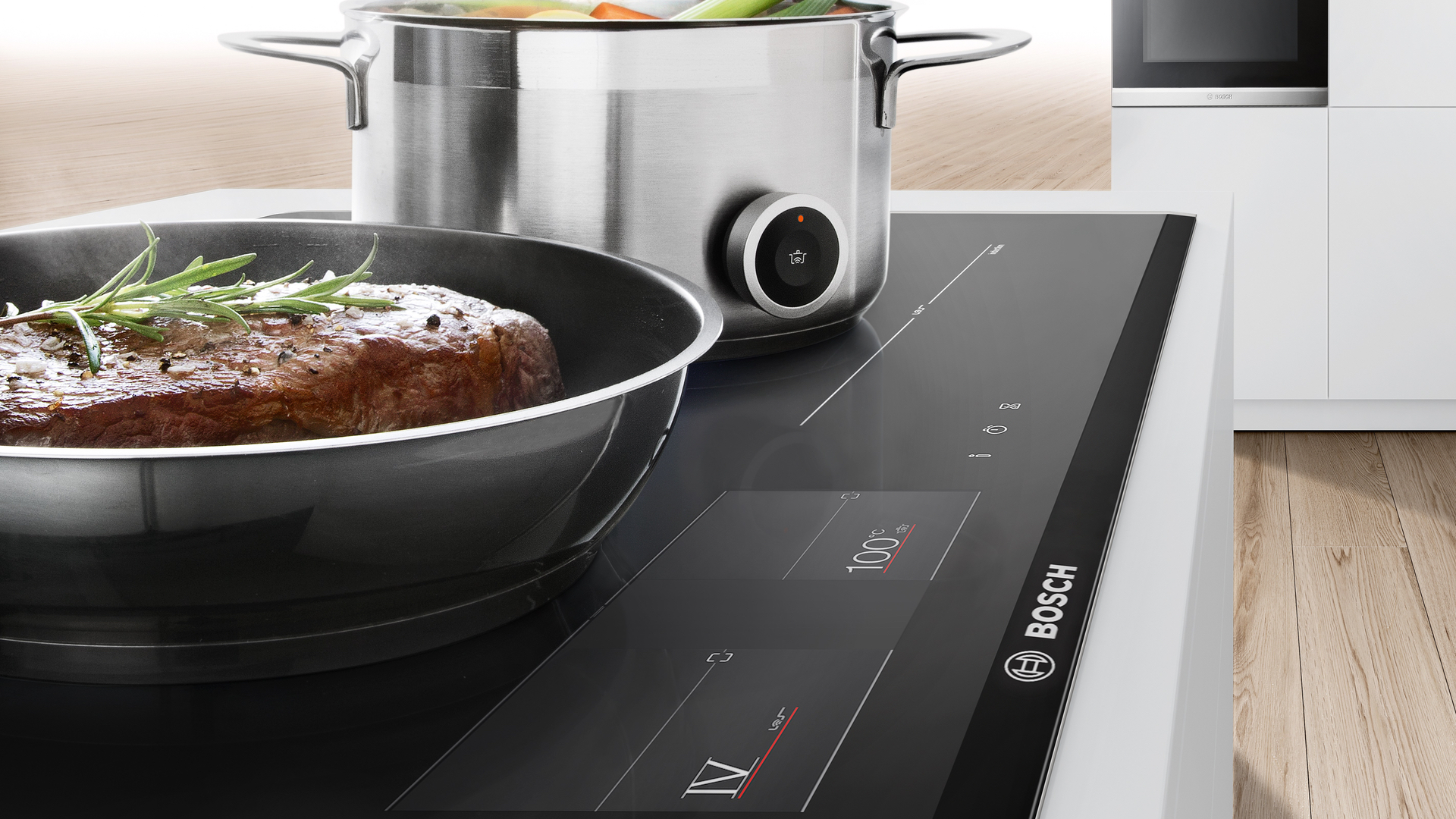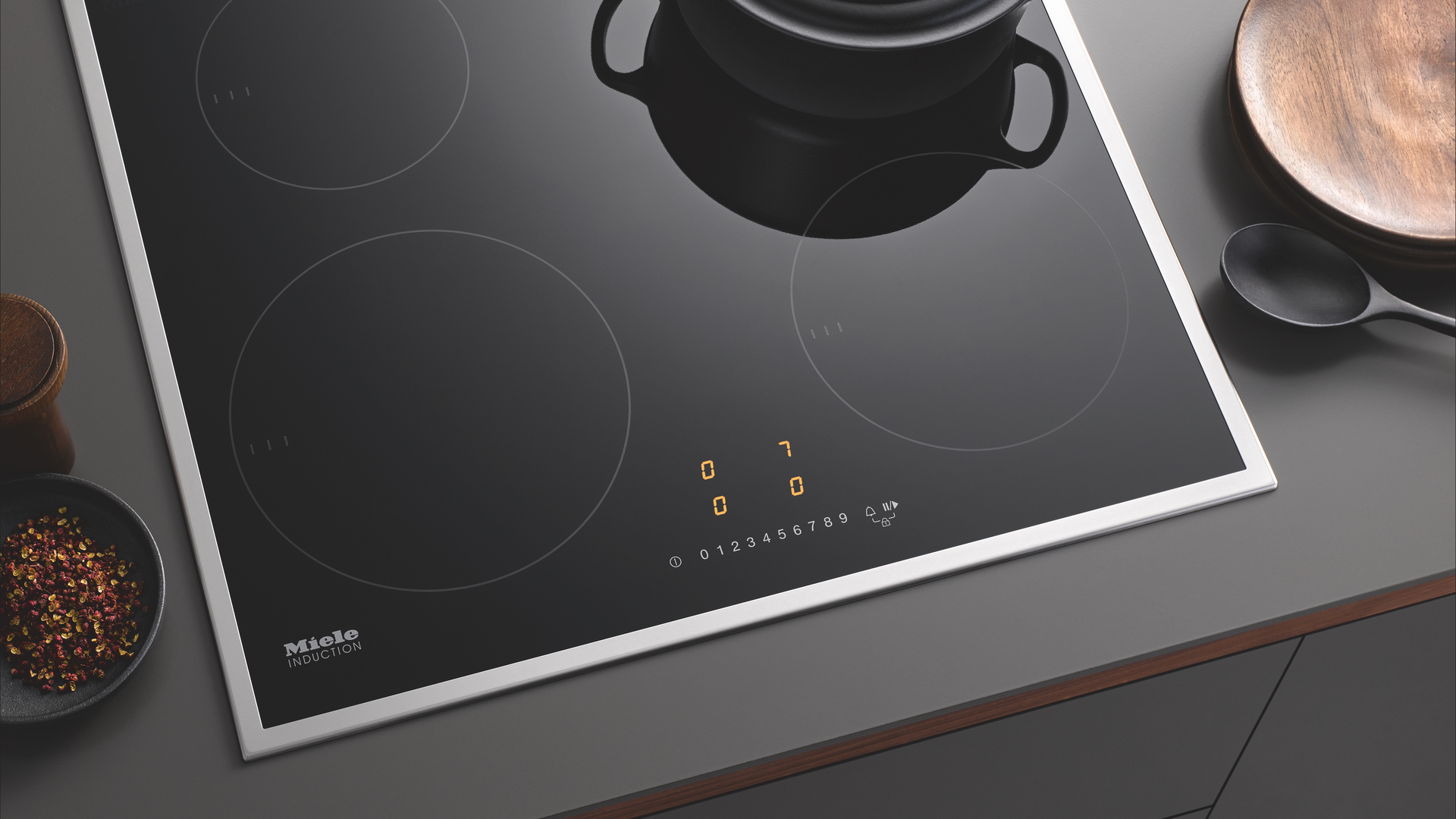What is an induction hob and how does it work?
Everything you need to know about induction hobs in one jargon-free guide, including what pans they work with


You may be perfectly happy cooking on gas, ceramic or an Aga-style hotplate but try an electric induction hob just once and chances are you’ll be straight onto our list of the best induction hobs, looking to buy one for yourself.
Electric induction has truly revolutionised both home and professional cooking like no other invention in recent history. It is, quite literally, one of mankind’s most efficient modern inventions alongside the LED bulb. If you're wondering how, why and what exactly all the fuss is about, this guide will make everything clear.
The first electric induction hobs were introduced in the 1980s but they were very underpowered and expensive to buy. Fast forward a few decades and induction hobs have become the go-to method for both domestic and professional cooking, and for a number of valid reasons which we’ll go into here.
Don't forget we also have guides to the best gas hobs if you decide to go that route, plus the best oven and best range cooker.
Induction hobs: what’s all the fuss about?

The clean, svelte lines of a modern induction hob.
Ask anyone who has ever used an induction hob and they’ll tell you that they’ve never looked back. In terms of controllability, efficiency and speed, induction is some distance ahead of gas and a zillion times better than the electrical equivalent, ceramic.
While gas is very responsive when raising or lowering cooking temperatures to dramatic degrees, it’s not a patch on electric induction where, in some instances, temperatures can be lowered or raised by one degree at a time. This makes induction a brilliant choice for all cooking scenarios and especially boiling and simmering.
According to tests, induction is at least 50% faster than gas when boiling water and, depending on the quality of the hob and width of saucepan, between 10% and 40% faster than a kettle.
Get all the latest news, reviews, deals and buying guides on gorgeous tech, home and active products from the T3 experts
Achieving a perfect simmer with gas can sometimes be a bit hit and miss – the usual result is a pan that boils over, especially when cooking rice with a lid on. With induction, there’s less chance of this happening because the heat control system is usually much more sensitive to changes and more consistent. Naturally this inherent controllability also makes induction hobs ideal for frying at a wide range of temperatures, whether its a gentle kiss of heat for chopped garlic or BBQ grill-type temperatures for a perfectly caramelised fillet steak.
Electric induction hobs are also much safer to use. In fact, safety is one of the very best things about them. Where gas and ceramic hobs produce high levels of heat via a naked flame or a red-hot element, the surface of an induction hob rarely gets hotter than a radiator, and that’s only because the pan you’ve been boiling has transferred some heat back to the hob surface. You can literally put a tea towel between the hob and a pan, turn it on full blast and the towel won’t catch fire.
This is a brilliant thing for both clumsy adults and especially children. Moreover, because the whole hob is completely flat, any spillages like boiled milk or slimy rice or pasta water are very easily cleaned with a simple flick of a kitchen wipe.
However, there are two key caveats with induction – one minor and the other possibly major – which you can read about below.
Induction hobs: how do they work?

Unlike ceramic or gas hobs that heat the entire pot or pan, which in turn transfers the heat to its contents, electric induction hobs heat the ingredients directly using the invisible powers our old undervalued friend, magnetism. In fact, with the induction system, the pan itself becomes the heat source or element – electromagnetic waves penetrate the base of the pot and begin to agitate the electrons, which in turn creates heat for cooking.
In the pantheon of energy-saving creations, induction is a truly groundbreaking achievement of science and physics. Unlike, say, gas which loses around 60% of its heating energy by simply disappearing into the air around the hob, the average induction plate loses just 15% of its energy and that makes it the most energy efficient cooking method of all – and the most environment friendly, too.
Induction hobs: what is the best type of induction system?

If you can afford it, an induction hob with FlexInduction tech like the Bosch PXX975KW1E will make your cooking life go with a swing.
Most cheaper electric induction hobs are equipped with four separate cooking zones of varying sizes for different sized pots and pans. However, some modern models also allow you to bridge two zones to create one large zone for bigger pans.
Better still, the very best models these days don’t have any separate zones at all – you simply place the pot or pan anywhere on the surface and the automatic pot detection system will determine the size of pan and provide power only to that pan’s surface. This new cooktop technology is called FlexInduction and it’s highly recommended – if you can afford the extra outlay.
Induction hobs: installation
Some induction hobs can be plugged straight into a standard 13-amp mains socket but they are not always the most powerful, especially if using three or more pots at once. For best results, we would advise going for a model with about 7.4kW of power.
However, a model is this region may require having a separate ring main fitted in your home at extra cost. And if you also have an electric oven on the same ring main, you may also need an even higher rated cable. We’d advise employing the services of an electrician beforehand just to be sure you won’t be purchasing a product that needs a whole electrical setup.
Induction hobs: caveats

There are very few issues with the electric induction method. Yes, induction hobs are more expensive to buy than their gas counterparts, but on the plus side they’re cheaper to run and much more efficient than any other cooking method. However, bear in mind that the induction principal only works with ferrous metals such as steel and cast iron, and chances are at least some of your current cookware is of the wrong variety, so you'll need to replace it.
The best way to test if any of your existing pots and pans are induction-ready – the majority of modern pans it has to be said – is to hold a magnet to the base. If it sticks, you’re good to go.
Another much more important consideration to bear in mind is that electromagnetic fields can interfere with pacemakers, so you’re advised to perhaps avoid using an induction hob if you are fitted with one. According to the Heart Matters website, "induction hobs do generate electromagnetic fields, so keep a distance of at least 60cm (2ft) between the stovetop and your pacemaker. Most people should be able to use a hob if they follow these precautions, but if you are choosing a new cooker, it may be easier to pick one that is not an induction hob".
Derek (aka Delbert, Delvis, Delphinium, Delboy etc) specialises in home and outdoor wares, from coffee machines, white appliances and vacs to drones, garden gear and BBQs. He has been writing for more years than anyone can remember, starting at the legendary Time Out magazine – the original, London version – on a typewriter! He now writes for T3 between playing drums with his bandmates in Red Box (redboxmusic).
